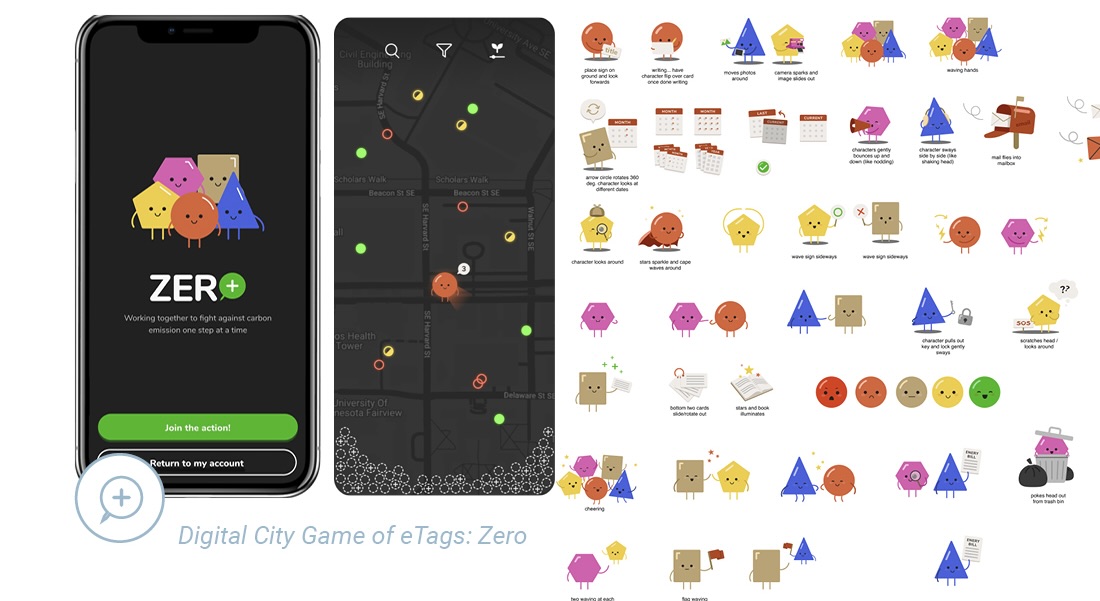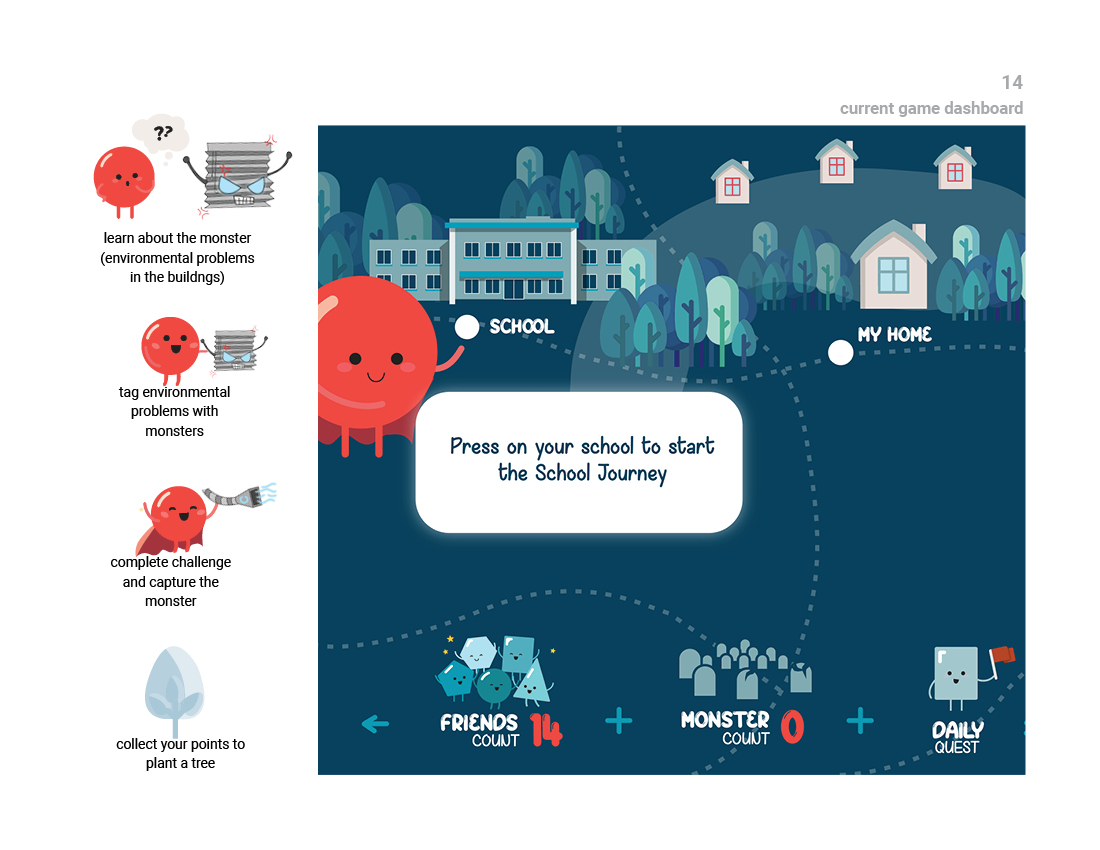A project years in the making, eFargo is an interactive game that teaches users about carbon emissions and helps them reduce energy use in the real world. Developed by a team of faculty and students from the College of Design and North Dakota State University (NDSU), the project was initially created and has subsequently been led by Associate Professor Malini Srivastava (Architecture). The project has won numerous awards, including the highly competitive 2022 R+D Award from Architect Magazine.

“I started this work in 2014 when I received a Bush Foundation Fellowship, which I used to gain expertise in play-based, large-scale environmental action,” explained Srivastava. “Through my work, I want to empower every person to act, not just experts. I think play and games are a key way to achieve this goal, which is why it became the focus of my doctorate in design at Carnegie Mellon.” Srivastava was a faculty member at NDSU during this time and made connections with the City of Fargo to set-up play frameworks using the city’s residential and municipal buildings as “game boards”.

eFargo games challenged players to “tag” items and actions that contribute to carbon emissions and energy usage—such as leaving the lights on, wasting food, or overusing heating or cooling systems—as “monsters”. Players learn how to identify these issues and how to address them in the real world, leading to a lower carbon footprint.
In 2017 the research team entered eFargo into the Georgetown University Energy Prize, which challenged cities and counties with populations between 5,000 to 250,000 to reduce their energy use during a two-year period. “The competition focused on the reduction of municipal and residential building energy use by increasing energy efficiency. Our partnership with the City of Fargo, local utilities, and public school districts through eFargo lowered carbon emissions by 11% over two years. There were over 100 cities that entered the competition and Fargo won!” said Srivastava.
Since its launch, more than 6,000 K–12 students and other community members have played eFargo. Within three to nine weeks of playing, schools typically reduce energy use by up to 15%, while homes that participate see an average savings of 8%.

Most recently, the College of Design completed a new iteration of the eFargo K-12 game and partners at NDSU are conducting user testing of the prototype in schools. Srivastava and her project partners are also working on creating new game designs through the creation of the E-games-lab. “We have designed several games, and some we take to community events and have children try out. We develop narratives, stories, characters, all to have community input in the design,” said Srivastava. “In our current games we don't just imagine cities as the game settings, but also classrooms, homes, and spaces people occupy every day. We want to empower students, youth, and communities to work on reducing their own carbon footprint.”
Srivastava and her collaborators are now working on a related game called “Zero,” which was funded by an AIA Upjohn Research Initiative grant. “There were so many people involved in eFargo, students, community members, experts from different fields, utilities, city government. The list is long and I can’t wait to see where the work continues to take us.”
PROJECT CREDITS
- Project Leads for Research, Design & Management: Dr. Malini Srivastava, AIA (University of Minnesota) & Prof. Cindy Urness, AIA (NDSU)
- Project Lead for Technology & Design:
- 2015–2018: Peter Atwood & Troy Raisanen
- 2017–2020: Dr. Yang Song
- City of Fargo Leaders (2015–2019): Mike Williams and Dan Mahli
- Project Designers and Researcher Fellows (UMN and NDSU):
- 2021–2022: Java Nyamjav, Karianna Larson, Aaron Yang and Kai Chen
- 2020-2021: Yunha Seo 2019–2020: Philp Reim, Noor Abdelhamid
- 2017–2019: Dylan Neururer, Ian Schimke, Greta Berens, Nick Braaksma
- 2015–2017: Amber Grindeland, Mike Christenson, Mackenzie Lyseng
- University of Minnesota and North Dakota State University teams: Dr. Huojun Yang, Dr. Rajesh Kavasseri, Dr. Anne Denton, Ben Dalton, Noah Thompson, Tanner Naastad, Sarah Biesterveld, Keira Rachac, Aaron Warner, Alex Jansen, Amy McDonald, Amy Mueller, Peter Mueller, Josh Highley, Krstina Heggedal, Kristina Kaupa, Mackenzie Lyseng, Mitch Nagel, Nate Wallestad, Rachel Grider, Ryan Gapp, Ryan Gram, Rachel Marsh, Sarah Watson, Samantha Marihart, Taylor Schuman, Olivia Mauk, Chufue Yang, Mikayla McVay, Meghan Gahlman, Petra Jungbluth, Haley Schraufnagel, Maura MacDaniel, Qi Heng Lee, Erick Bickler.
- Funding: ND Department of Commerce, State Energy Program, Department of Energy, Edyth and Archibald Bush Foundation of Minnesota, City of Fargo grant, AIA Upjohn Research Grant.
- Community partners: Fargo Public School, Xcel Energy, Cass County Electric Cooperative, City of Fargo.
Every year faculty, instructors, researchers, and students from across the College of Design present their research during the annual Research and Creative Scholarship Showcase. You can learn more about the 2022 presenters and their work in this year’s round-up.
Congenital heart disease (CHD) is a physical heart defect that begins in the womb, impacting around 40,000 children born in the U.S. each year. On a mission to improve education for diagnosed children and their families, Drs. Amr El-Bokl and Gurumurthy Hiremath (Department of Pediatrics, UMN Medical School), partnered with product design undergraduate student Levi Skelton and Assistant Professor Carlye Lauff to create a product for teaching children about CHD.
The concept that science can and should be accessible to all is the grounding principle behind the Science Communication Lab at the University of Minnesota. Founded to provide interdisciplinary internship opportunities, the lab has consistently attracted College of Design undergraduate students interested in creating stories or media that make complex research and scientific topics accessible to the general public.





